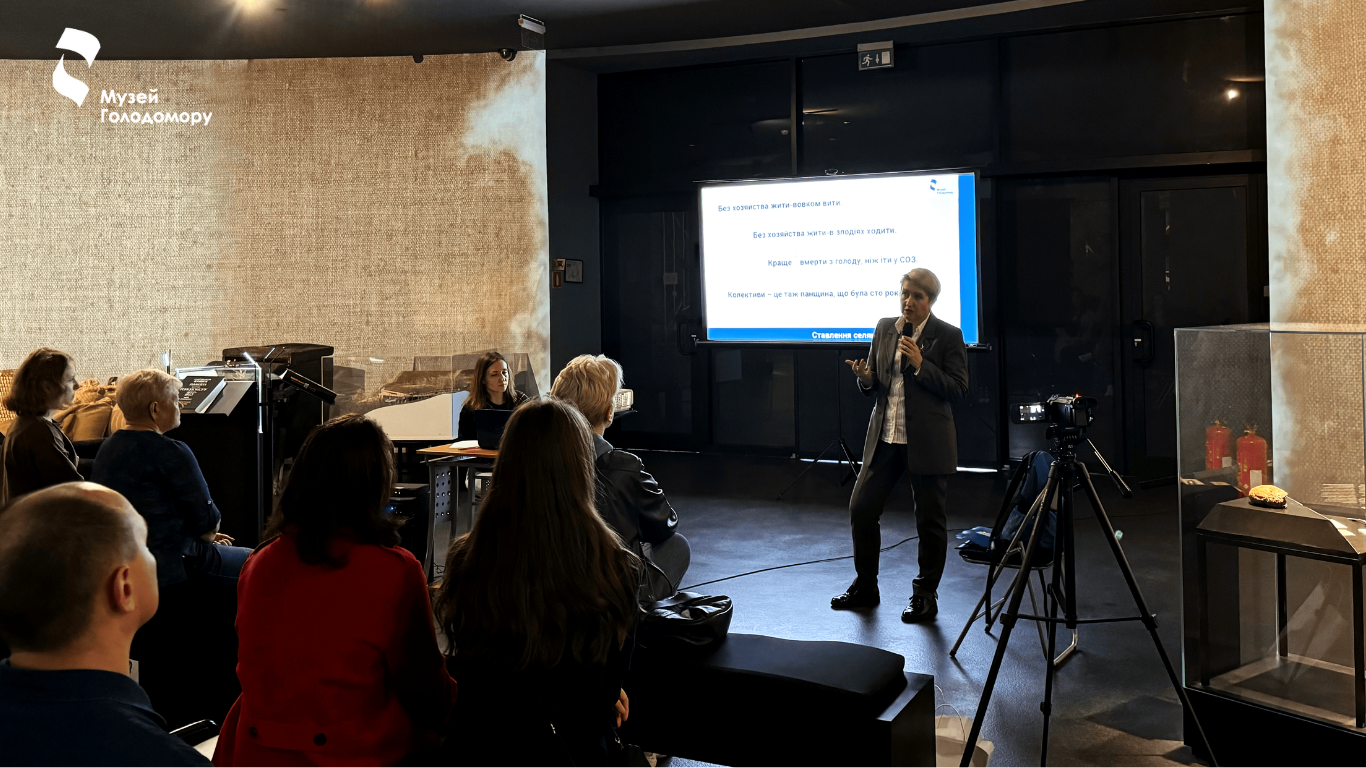A public conversation took place with historian Natalia Romanets
On March 30, the Holodomor Museum held a public conversation with Natalia Romanets, a doctor of historical sciences and lead researcher of the Holodomor research department of our museum.
The focus of the conversation, moderated by Yana Hrynko, curator of the “INTENT” exhibition, is the Ukrainian resistance of the late 1920s and early 1930s.
Among Ukrainians, especially among those who studied history back in Soviet school, there is still an idea that the Holodomor became possible because Ukrainians were passive victims who allowed the genocide to happen to them. But this is a completely wrong idea. After all, the answer to the policies of the occupying Bolshevik regime was more than 4,000 uprisings and riots that broke out in different regions of Ukraine.
“In the first half of the 20s, part of the farmers decided to stop the struggle. In 1921, the Bolsheviks held an amnesty and many rebels and even their leaders believed the Bolsheviks then. Relatively speaking, they were “tired of fighting.” And those who were tired of fighting later paid for it during full-scale collectivization, dekulakization, the Holodomor, as well as the Kulak operation during the Great Terror. Because all these agreements were worthless: those who were amnestied were later reminded everything,” Natalia Romanets notes.
She emphasizes: that just as it was impossible to negotiate with the Bolsheviks then, so it is impossible to negotiate with Russia now.
“If today there are people who believe that “it won’t affect us”, “we will be able to survive,” the Great Terror proves that it will not be possible to survive, – adds Ms. Natalia. – There is still a belief that the party Soviet elite was repressed at that time. But this is not true. Because the main part of the repressed were ordinary peasants-collective farmers. Having not been destroyed during the dekulakization and the Holodomor, they were finished off in 1937–1938. The peculiarity of Soviet terror is that they repressed for nothing. You can love the Soviet government and be a devoted communist, but if it is necessary to fill the quota for repression, you will fill this quota.”
The conversation took place within the framework of the “INTENT” exhibition. In the future, we are planning a series of such dialogues with historians and famous public figures. Follow our announcements!
